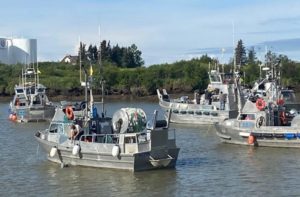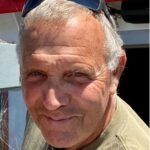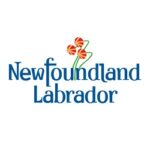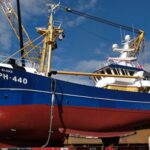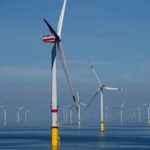Tag Archives: Fish Radio
McDowell Group Report outlines economics of Kodiak Island’s seafood industry. Jobs=38%
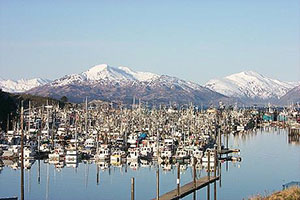 Kodiak is grappling with how new ways of managing groundfish might affect the island’s economy. Plans being crafted now affect catches of up to 25 different fish species – which together made up 83 percent of all Kodiak landings in 2014. To provide some guidance, a new economic impact report breaks down how the entire seafood industry plays out throughout the Kodiak Island borough, which includes six outlying villages for a total population of 14,000 residents. The draft report done by the McDowell Group gives a 10 year snapshot starting in 2005, covering all the local actions it takes to be a seafood powerhouse year after year. Nearly 500 million pounds of seafood worth $150 million to fishermen was delivered to Kodiak Island in 2014. Read the rest here 18:08
Kodiak is grappling with how new ways of managing groundfish might affect the island’s economy. Plans being crafted now affect catches of up to 25 different fish species – which together made up 83 percent of all Kodiak landings in 2014. To provide some guidance, a new economic impact report breaks down how the entire seafood industry plays out throughout the Kodiak Island borough, which includes six outlying villages for a total population of 14,000 residents. The draft report done by the McDowell Group gives a 10 year snapshot starting in 2005, covering all the local actions it takes to be a seafood powerhouse year after year. Nearly 500 million pounds of seafood worth $150 million to fishermen was delivered to Kodiak Island in 2014. Read the rest here 18:08
Salmon markets face lower supplies
 A downward shift in supplies of salmon could boost demand for Alaska fish. If that basic rule holds true, prices could move out of the basement. Some balance appears to be in the offing. Alaska’s projected salmon harvest of 161 million fish is down 40 percent from last season due to an off year for pinks. Bristol Bay’s sockeye forecast of just under 30 million is well below harvests of the past two years. That helps remove backlogs of reds, which are moving briskly through markets. A prime example: Sockeye exports to Japan, which is enduring local fishery failures, surged 320 percent at the end of last year and demand is expected to remain strong. Audio report, Read the rest here 17:51
A downward shift in supplies of salmon could boost demand for Alaska fish. If that basic rule holds true, prices could move out of the basement. Some balance appears to be in the offing. Alaska’s projected salmon harvest of 161 million fish is down 40 percent from last season due to an off year for pinks. Bristol Bay’s sockeye forecast of just under 30 million is well below harvests of the past two years. That helps remove backlogs of reds, which are moving briskly through markets. A prime example: Sockeye exports to Japan, which is enduring local fishery failures, surged 320 percent at the end of last year and demand is expected to remain strong. Audio report, Read the rest here 17:51
Bering Sea crab prices increase big across the board
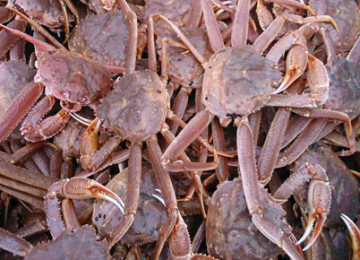 Only a handful of boats are still out hauling crab pots from the Bering Sea and they can be sure of a good price for their catch. It’s just been a really good year for crab all around. Jake Jacobsen is a four decade fishing veteran and director of the Inter-Cooperative Exchange, a harvester group that catches 70 percent of the Bering Sea crab quota. Right now the boats are finishing off the Tanner and snow crab shares. We haven’t even started the final prices for snow crab yet. We started out with an advance of $2.00 a pound but that really doesn’t mean anything. The advance price is just a number we throw out there so the fishermen have some money to pay their expenses as they go along. Audio, Read the rest here 18:35
Only a handful of boats are still out hauling crab pots from the Bering Sea and they can be sure of a good price for their catch. It’s just been a really good year for crab all around. Jake Jacobsen is a four decade fishing veteran and director of the Inter-Cooperative Exchange, a harvester group that catches 70 percent of the Bering Sea crab quota. Right now the boats are finishing off the Tanner and snow crab shares. We haven’t even started the final prices for snow crab yet. We started out with an advance of $2.00 a pound but that really doesn’t mean anything. The advance price is just a number we throw out there so the fishermen have some money to pay their expenses as they go along. Audio, Read the rest here 18:35
New U.S. Coast Guard Safety Regs For Life Rafts
 By the end of next month there will be new Coast Guard safety regulations for the use of flotation devices on all sea vessels. Smaller passenger vessels will no longer be able to use life rings and other flotation devices as the only form of survival gear, but instead equipped their boat with a life raft to assure that in the case of a vessel sinking, every passenger is safely out of water. Scott Wilwert is the Coast Guard Fishing Safety Coordinator in Juneau.“On February 26 2016 survival craft requirements for commercial fishing vessels as well,,, Audio, Read the rest here 16:46
By the end of next month there will be new Coast Guard safety regulations for the use of flotation devices on all sea vessels. Smaller passenger vessels will no longer be able to use life rings and other flotation devices as the only form of survival gear, but instead equipped their boat with a life raft to assure that in the case of a vessel sinking, every passenger is safely out of water. Scott Wilwert is the Coast Guard Fishing Safety Coordinator in Juneau.“On February 26 2016 survival craft requirements for commercial fishing vessels as well,,, Audio, Read the rest here 16:46
Groundfish boosts Alaska fishing jobs, 84% of total fish poundage
 Alaska’s seafood industry puts more people to work than oil and gas, mining, tourism and logging combined. And the numbers continue to grow, thanks to increased catches of groundfish, primarily pollock and cod. According to the November issue of by the state Department of Labor, fishing employment grew by 0.7 percent last year, boosted by 350 jobs in groundfish harvesting – a nearly 25 percent increase. Gains were made in every month of the year, with employment records set in March and December. Read the rest here 16:08
Alaska’s seafood industry puts more people to work than oil and gas, mining, tourism and logging combined. And the numbers continue to grow, thanks to increased catches of groundfish, primarily pollock and cod. According to the November issue of by the state Department of Labor, fishing employment grew by 0.7 percent last year, boosted by 350 jobs in groundfish harvesting – a nearly 25 percent increase. Gains were made in every month of the year, with employment records set in March and December. Read the rest here 16:08
Trawlers may convert to pot gear for cod catches
 One of the tools being talked about to help trawlers reduce salmon and halibut bycatch is the opportunity to voluntarily convert to pot gear to catch Pacific cod. It’s an option being discussed by fishery managers as they craft a trawl bycatch reduction plan for the Gulf of Alaska. Sam Cunningham, “The reason someone might be interested in using pot gear, and the reason is that it would have lower bycatch of prohibited species of Chinook salmon and halibut, and when those species are caught incidentally they would be less likely to die because they are caught in pot gear.” Listen, and read the rest here 17:51
One of the tools being talked about to help trawlers reduce salmon and halibut bycatch is the opportunity to voluntarily convert to pot gear to catch Pacific cod. It’s an option being discussed by fishery managers as they craft a trawl bycatch reduction plan for the Gulf of Alaska. Sam Cunningham, “The reason someone might be interested in using pot gear, and the reason is that it would have lower bycatch of prohibited species of Chinook salmon and halibut, and when those species are caught incidentally they would be less likely to die because they are caught in pot gear.” Listen, and read the rest here 17:51
Alaska 2015 salmon values = $414 million; PWS tops all regions
 The Alaska Department of Fish and Game (ADF&G) has compiled preliminary figures for the 2015 commercial salmon harvest and harvest value. The total 2015 statewide commercial salmon harvest was 263.5 million fish, and was comprised of 474,000 Chinook salmon, 15.2 million chum salmon, 3.6 million coho salmon, 190.5 million pink salmon, and 54 million sockeye salmon. Overall, this represents the second largest salmon harvest on record, and was exceeded only by the record harvests of 2013. Read the rest here 15:32
The Alaska Department of Fish and Game (ADF&G) has compiled preliminary figures for the 2015 commercial salmon harvest and harvest value. The total 2015 statewide commercial salmon harvest was 263.5 million fish, and was comprised of 474,000 Chinook salmon, 15.2 million chum salmon, 3.6 million coho salmon, 190.5 million pink salmon, and 54 million sockeye salmon. Overall, this represents the second largest salmon harvest on record, and was exceeded only by the record harvests of 2013. Read the rest here 15:32
Alaska salmon permit values nosedive after the fishing season
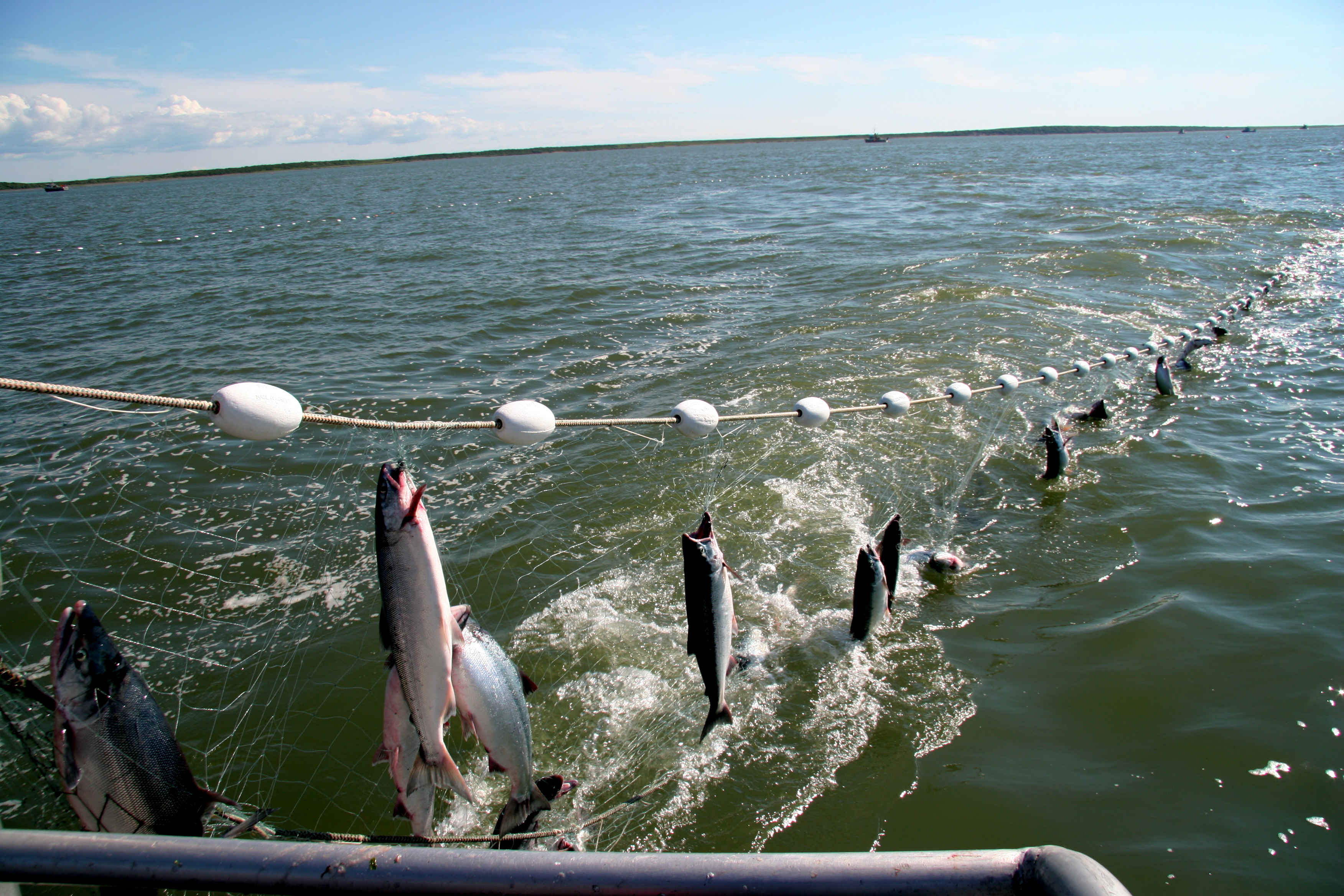 The value of Alaska salmon permits has taken a nosedive directly after the fishing season. The permit market is really unsettled right now after the season we just had. There were a few bright spots out there, but fisheries in a few areas of the state that did not do well, either because of production or price or both. So the dust really hasn’t settled here since the season ended. Doug Bowen runs Alaska Boats and Permits in Homer. permits have taken the biggest hit after another huge sockeye run ran into a perfect storm of global currency chaos amid a glut of wild and farmed salmon on the market. Bay fishermen got a dismal price of just 50 cents a pound for their reds. Listen, Read the rest here 16:12:06
The value of Alaska salmon permits has taken a nosedive directly after the fishing season. The permit market is really unsettled right now after the season we just had. There were a few bright spots out there, but fisheries in a few areas of the state that did not do well, either because of production or price or both. So the dust really hasn’t settled here since the season ended. Doug Bowen runs Alaska Boats and Permits in Homer. permits have taken the biggest hit after another huge sockeye run ran into a perfect storm of global currency chaos amid a glut of wild and farmed salmon on the market. Bay fishermen got a dismal price of just 50 cents a pound for their reds. Listen, Read the rest here 16:12:06
Comments wanted as GOA trawl bycatch reduction program is crafted
 Crafting a program to reduce trawl bycatch in Gulf groundfish fisheries has been underway for three years. In October the North Pacific Council will begin piecing the new program together in a process that could take several years. The new program will include some form of catch shares (because it’s easy for regulators!) If a member of the public is worried about bycatch management but they don’t think catch shares are a viable alternative, we’d really appreciate hearing other ideas. (Because they can’t figure out any other way!!!) Listen, Read the rest here 17:47
Crafting a program to reduce trawl bycatch in Gulf groundfish fisheries has been underway for three years. In October the North Pacific Council will begin piecing the new program together in a process that could take several years. The new program will include some form of catch shares (because it’s easy for regulators!) If a member of the public is worried about bycatch management but they don’t think catch shares are a viable alternative, we’d really appreciate hearing other ideas. (Because they can’t figure out any other way!!!) Listen, Read the rest here 17:47
Setnet numbers, bycatch rates refute sport claims
Salmon setnets are not outdated forms of fishing gear that indiscriminately kill everything in their paths. That’s the main talking point of sport fish advocates aiming to ban setnets in six regions of Alaska. “I believe now more than ever that Alaskans want to end the devastating and outdated mode of commercial fishing called setnetting. I spent six years as a setnetter in Upper Cook Inlet and during that time I caught a lot of red salmon. However, my nets also caught sharks, birds, ducks, flounders, dolly vardens and a lot of king salmon. Setnets are decimating other species in Alaska.” But the data don’t back up the deadly claims that the gear indiscriminately kills and threatens other species. Listen, Read the rest here
The Fish Wife Life – What’s the fishing life like for the wives left behind?
 A fisherman’s life is a wonderful life, but what about for the fisherman’s wives? Fish Radio asked some of Kodiak’s wive’s what their likes and dislikes are being married to a fisherman. I guess my likes would be you know it’s always nice when the leave and its always nice when the come home. It’s the best of both worlds. It’s hard being a single parent all the time. When you never know when they are coming home and when they come home they still have boat work, it’s not like they come home and don’t have work to do or they are done working. Audio, Read the rest here 16:43
A fisherman’s life is a wonderful life, but what about for the fisherman’s wives? Fish Radio asked some of Kodiak’s wive’s what their likes and dislikes are being married to a fisherman. I guess my likes would be you know it’s always nice when the leave and its always nice when the come home. It’s the best of both worlds. It’s hard being a single parent all the time. When you never know when they are coming home and when they come home they still have boat work, it’s not like they come home and don’t have work to do or they are done working. Audio, Read the rest here 16:43
Alaska’s salmon season officially starts tomorrow, May 14!
Alaska’s 2015 salmon season officially gets underway tomorrow, May 14th. Trollers in Southeast Alaska fish for king salmon nearly all year long, but the official start is 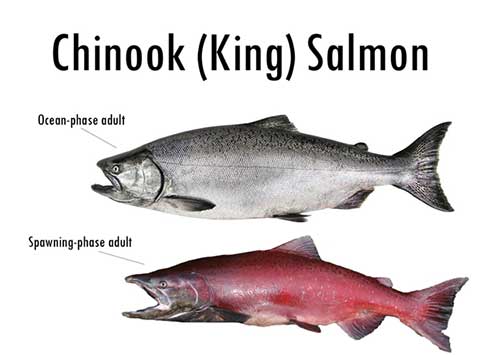 near Cordova. The 500-plus fleet is set for the first 12 hour opener on Thursday amid the usual media hoopla. The harvest at Copper River this year is set at 2.2 million sockeye salmon and a conservative six thousand kings. In following weeks, various salmon openers will kick off all over Alaska,,, Read the rest here 17:51
near Cordova. The 500-plus fleet is set for the first 12 hour opener on Thursday amid the usual media hoopla. The harvest at Copper River this year is set at 2.2 million sockeye salmon and a conservative six thousand kings. In following weeks, various salmon openers will kick off all over Alaska,,, Read the rest here 17:51
Super Bait
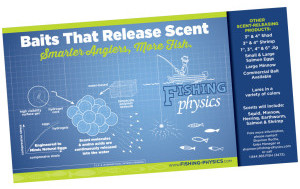 A new type of bait is changing the game for anglers and commercial fishermen alike. Fishing Physics holds the patent to the new super bait, and there is nothing else like it. This eco friendly fish bait… made out of a special hydro gel is a better fish attractant, reusable, and cost effective. A handful of commercial boats are trying out the bait right now. Perry says fishermen are doing a comparison of live bait to theirs. Audio, Read the rest here 15:55
A new type of bait is changing the game for anglers and commercial fishermen alike. Fishing Physics holds the patent to the new super bait, and there is nothing else like it. This eco friendly fish bait… made out of a special hydro gel is a better fish attractant, reusable, and cost effective. A handful of commercial boats are trying out the bait right now. Perry says fishermen are doing a comparison of live bait to theirs. Audio, Read the rest here 15:55
PInks are out competing sockeye salmon for food at sea, report says
 Growing numbers of pink salmon are out competing sockeyes for food in the ocean, causing the reds to grow slower and smaller. That’s the claim of a new study by Seattle and British Columbia researchers, who say the race for food ultimately affects sockeye abundance and survival. Greg Ruggerone is a senior scientist at Natural Resources Consultants in Seattle and study co-author. He says it was aimed originally at finding causes for declining sockeye runs at British Columbia’s Fraser River in 2009. Audio, Read the rest here 18:34
Growing numbers of pink salmon are out competing sockeyes for food in the ocean, causing the reds to grow slower and smaller. That’s the claim of a new study by Seattle and British Columbia researchers, who say the race for food ultimately affects sockeye abundance and survival. Greg Ruggerone is a senior scientist at Natural Resources Consultants in Seattle and study co-author. He says it was aimed originally at finding causes for declining sockeye runs at British Columbia’s Fraser River in 2009. Audio, Read the rest here 18:34
AK fishing updates, ADFG budget cuts
 As always in Alaska, lots of fishing is going on from Ketchikan to the Bering Sea. Salmon trollers are back out on the water at Neets Bay near Ketchikan , and it’s hard to believe that the 2015 salmon season will officially kick off in just a few weeks at Copper River. More than 50 boats are dropping pots for nearly 70,000 pounds of shrimp at Prince William Sound after a three year closure. Read the rest here 20:25
As always in Alaska, lots of fishing is going on from Ketchikan to the Bering Sea. Salmon trollers are back out on the water at Neets Bay near Ketchikan , and it’s hard to believe that the 2015 salmon season will officially kick off in just a few weeks at Copper River. More than 50 boats are dropping pots for nearly 70,000 pounds of shrimp at Prince William Sound after a three year closure. Read the rest here 20:25
Who are Alaska’s biggest fishing whiners?
 Alaska’s fisheries are targeted by many different gear types, from dip nets to big Bering Sea catcher processors. Fish Radio went down to the docks to hear what Kodiak fishermen believe are the whiniest group, Probably those who are less fortunate in catching the most fish. Definitely the trawl fleet. The state wide fishing fleet. I do believe it’s the Listen, and read the rest here 20:57
Alaska’s fisheries are targeted by many different gear types, from dip nets to big Bering Sea catcher processors. Fish Radio went down to the docks to hear what Kodiak fishermen believe are the whiniest group, Probably those who are less fortunate in catching the most fish. Definitely the trawl fleet. The state wide fishing fleet. I do believe it’s the Listen, and read the rest here 20:57
Alaska – New opportunities for scallops, seine pollock fall flat
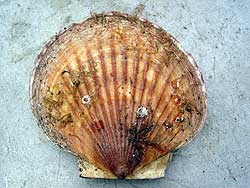 Alaska is trying to provide new fishing opportunities inside state waters but the two latest have fallen flat as a flounder. A scallop fishery that reverted to open access this year drew no takers by the April 1 deadline. There were no takers again in the Westward Region for a new seine pollock fishery that opened this month and will continue into June. It’s the second year for the trial fishery permitted by the state Board of Fish. For seiners, Stichert says there have been lots of tire kickers, Audio, Read the rest here 17:45
Alaska is trying to provide new fishing opportunities inside state waters but the two latest have fallen flat as a flounder. A scallop fishery that reverted to open access this year drew no takers by the April 1 deadline. There were no takers again in the Westward Region for a new seine pollock fishery that opened this month and will continue into June. It’s the second year for the trial fishery permitted by the state Board of Fish. For seiners, Stichert says there have been lots of tire kickers, Audio, Read the rest here 17:45
Herring starts today at Kodiak, Togiak’s next; Sitka price info
 Kodiak’s roe herring season starts today and unlike other regions, where the fishery is very concentrated and can last less than a week, Kodiak herring can show up in roughly 80 districts around the island well into June. About 3,200 tons will come out of the fishery, taken by 15 to 20 boats. While test fisheries to gauge roe counts are underway at Kodiak, boats and five buyers are also showing up early at Alaska’s largest roe herring fishery at Togiak in Bristol Bay. Read the rest here 17:44
Kodiak’s roe herring season starts today and unlike other regions, where the fishery is very concentrated and can last less than a week, Kodiak herring can show up in roughly 80 districts around the island well into June. About 3,200 tons will come out of the fishery, taken by 15 to 20 boats. While test fisheries to gauge roe counts are underway at Kodiak, boats and five buyers are also showing up early at Alaska’s largest roe herring fishery at Togiak in Bristol Bay. Read the rest here 17:44
What’s Alaska’s biggest fishing town? UFA Fishing Fact Sheets has all the answers
 What Alaska town ranks as #1 for total commercial fishing participation? Based on the number of fishing permits, crew licenses and skippers, Anchorage comes out on top. That’s just one of the facts available in seafood industry fact sheets complied by . The facts include well-documented statewide data; added new this year are breakdowns for the Nome and Wade Hampton Census Areas, as well as for Washington, Oregon and California, which rank as the top three states for nonresident fishermen in Alaska. Read the rest here 16:49
What Alaska town ranks as #1 for total commercial fishing participation? Based on the number of fishing permits, crew licenses and skippers, Anchorage comes out on top. That’s just one of the facts available in seafood industry fact sheets complied by . The facts include well-documented statewide data; added new this year are breakdowns for the Nome and Wade Hampton Census Areas, as well as for Washington, Oregon and California, which rank as the top three states for nonresident fishermen in Alaska. Read the rest here 16:49
Climate change, acid oceans: NOAA research priorities
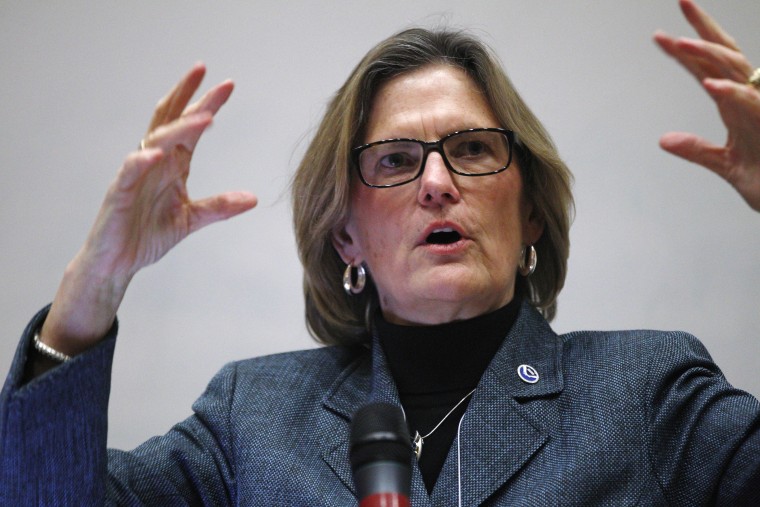 The changing climate and chemistry of our oceans is definitely on radar screens of federal planet watchers. That’s the assurance of Kathryn Sullivan, director of the National Oceanic and Atmospheric Administration. I don’t need to tell Alaskans – you are living it, you see it all around you. And the consequences that have societally, economically, ecologically you all are living it every day. Sullivan calls NOAA the nation’s environmental intelligence agency. (Really?) Audio, and read the rest here 17:47
The changing climate and chemistry of our oceans is definitely on radar screens of federal planet watchers. That’s the assurance of Kathryn Sullivan, director of the National Oceanic and Atmospheric Administration. I don’t need to tell Alaskans – you are living it, you see it all around you. And the consequences that have societally, economically, ecologically you all are living it every day. Sullivan calls NOAA the nation’s environmental intelligence agency. (Really?) Audio, and read the rest here 17:47
Water rights for wild salmon or coal mine? DNR to decide. Comments extended to April 9
The state is getting ready to choose between giving water rights to sustain wild salmon or to  proposed at Upper Cook Inlet. If it opts for the mine, the decision will set a troubling legal precedent – it means the same could soon be coming to a river near you. It would be the first time in Alaska’s state history that we would allow an Outside corporation to mine completely through a salmon stream. And the purpose is to ship coal to China. Read the rest here 23:06
proposed at Upper Cook Inlet. If it opts for the mine, the decision will set a troubling legal precedent – it means the same could soon be coming to a river near you. It would be the first time in Alaska’s state history that we would allow an Outside corporation to mine completely through a salmon stream. And the purpose is to ship coal to China. Read the rest here 23:06
Fishermen happy with their jobs; Don’t like privatized fisheries
 Alaska fishermen are happy with their career choice, but not so pleased with programs that carve up the catch. That pretty much sums up the findings in a multi-year study that aimed to gauge how Kodiak fishermen feel about privatizing the resource through things like catch shares and IFQs. Courtney Carothers, “I was trying to understand also how people thought about privatization compared to other kinds changes in the community and then also looking at how people thought about privatization in terms of its affects on individual and community well being.” Read the rest here 16:31
Alaska fishermen are happy with their career choice, but not so pleased with programs that carve up the catch. That pretty much sums up the findings in a multi-year study that aimed to gauge how Kodiak fishermen feel about privatizing the resource through things like catch shares and IFQs. Courtney Carothers, “I was trying to understand also how people thought about privatization compared to other kinds changes in the community and then also looking at how people thought about privatization in terms of its affects on individual and community well being.” Read the rest here 16:31
Brokers say “slow going” for Halibut IFQs, catch shares; lots of buyers/few sellers
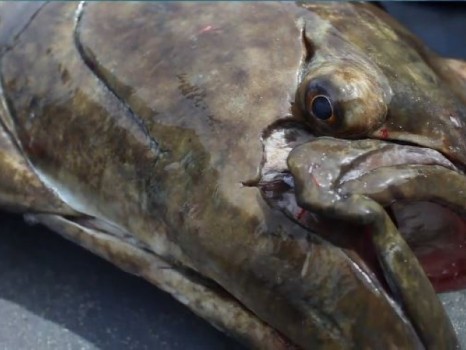 Right after the yearly catch limits are announced for halibut, brokers are busy with buying and selling shares of the catch. But it’s been slow going so far this year. Less of a rush this year, but there is less available. So I think the increases in 3A and 2C and the higher prices might bring out some more sellers, and of course the buyers are sitting there waiting. Listen, Read the rest here 16:50
Right after the yearly catch limits are announced for halibut, brokers are busy with buying and selling shares of the catch. But it’s been slow going so far this year. Less of a rush this year, but there is less available. So I think the increases in 3A and 2C and the higher prices might bring out some more sellers, and of course the buyers are sitting there waiting. Listen, Read the rest here 16:50
AK salmon permit values slump on forecast of lower fish prices
 2014 was one of the busiest years ever for brokers who help Alaskans buy, sell and trade fishing permits and quota shares. Olivia Olsen runs Alaskan Quota and Permits in Petersburg. Early March through May is when sales pick up for salmon permits. Early indicators point to lower salmon prices this year in a plentiful market, and that’s having a downward press on permit prices – notably, at Alaska’s bellwether sockeye fishery at Bristol Bay. Read the rest here 20:02
2014 was one of the busiest years ever for brokers who help Alaskans buy, sell and trade fishing permits and quota shares. Olivia Olsen runs Alaskan Quota and Permits in Petersburg. Early March through May is when sales pick up for salmon permits. Early indicators point to lower salmon prices this year in a plentiful market, and that’s having a downward press on permit prices – notably, at Alaska’s bellwether sockeye fishery at Bristol Bay. Read the rest here 20:02
Friday the 13th~ Salty Sea Superstitions
 A life of danger and uncertainty has seafarers observing a strict set of rules steeped in myth and superstition. Many sea going beliefs are based on the Bible, for example, Friday is the worst day to set out to sea. Most sources credit that to the belief that Christ was crucified on a Friday. Similarly, Sunday is the best day to begin a voyage, because Christ’s resurrection on that day is seen as a good omen. Thus the old adage, ‘Sunday sail, never fail.’ Listen, and read the rest here 07:36
A life of danger and uncertainty has seafarers observing a strict set of rules steeped in myth and superstition. Many sea going beliefs are based on the Bible, for example, Friday is the worst day to set out to sea. Most sources credit that to the belief that Christ was crucified on a Friday. Similarly, Sunday is the best day to begin a voyage, because Christ’s resurrection on that day is seen as a good omen. Thus the old adage, ‘Sunday sail, never fail.’ Listen, and read the rest here 07:36
Updates for upcoming halibut commission meeting – tension mounts
 The stage is set for some tension when halibut managers and stakeholders gather later this month in Vancouver. Only one catch limit comment was submitted by the December 31 deadline. To reduce handling and wastage in the fishery, the Seattle-based Fishing Vessel Owners’ Association is asking the IPHC to reduce the minimum size requirement for commercially caught halibut from 32 to 30 inches. Read the rest here 18:51
The stage is set for some tension when halibut managers and stakeholders gather later this month in Vancouver. Only one catch limit comment was submitted by the December 31 deadline. To reduce handling and wastage in the fishery, the Seattle-based Fishing Vessel Owners’ Association is asking the IPHC to reduce the minimum size requirement for commercially caught halibut from 32 to 30 inches. Read the rest here 18:51
Kodiak fishermen share thoughts on the biggest fishing challenges
 “I think finding crew from the younger generation. I was the only person in my highschool that was or wanted to be a fisherman.” “Well the coastal communities are not the vibrant, economically prosperous communities there were prior to limited entries, IFQ’s and rationalization . Whatever the solution is we need to provide a way for the young people in these communities to integrate into the fisheries and make a living.” Read the rest here 20:29
“I think finding crew from the younger generation. I was the only person in my highschool that was or wanted to be a fisherman.” “Well the coastal communities are not the vibrant, economically prosperous communities there were prior to limited entries, IFQ’s and rationalization . Whatever the solution is we need to provide a way for the young people in these communities to integrate into the fisheries and make a living.” Read the rest here 20:29
Permit buyback at Bristol Bay: Good idea, but how/who to pay for it …
At a packed Expo gathering last month in Seattle, a majority of permit holders said that favored reducing the fleet. When the question was raised generally of do you support a fleet reduction, probably 2/3 of the folks raised their hands. Then when the question was focused down to how many of you prefer a buyback, that dropped to about a third. Audio, Read the rest here 17:46
This is Fish Radio. I’m Laine Welch – How old is that crab? Audio
 Knowing the age compositions of marine stocks is crucial to sound management. Fish can be aged easily by examining their earbones or scales. Not so with crabs, because they molt. For years it’s been assumed that crab that don’t retain their hard parts throughout their lifetime due to growth by molting at which they lose their lose their exoskeleton and it was always assumed everything went with that. Read the rest here
Knowing the age compositions of marine stocks is crucial to sound management. Fish can be aged easily by examining their earbones or scales. Not so with crabs, because they molt. For years it’s been assumed that crab that don’t retain their hard parts throughout their lifetime due to growth by molting at which they lose their lose their exoskeleton and it was always assumed everything went with that. Read the rest here






 Following the devastating 2011 earthquake and tsunami in Japan, there have been public concerns about potential impacts on Alaska seafood from the Fukushima nuclear disaster. Although modeling and other analyses have not demonstrated a potential risk to Alaska fish, the Alaska Department of Environmental Conservation (DEC) Division of Environmental Health (DEH) has been coordinating with the Department of Health and Social Services (DHSS) Division of Public Health, as well as other state, federal, and international agencies and organizations to address continued public concerns.
Following the devastating 2011 earthquake and tsunami in Japan, there have been public concerns about potential impacts on Alaska seafood from the Fukushima nuclear disaster. Although modeling and other analyses have not demonstrated a potential risk to Alaska fish, the Alaska Department of Environmental Conservation (DEC) Division of Environmental Health (DEH) has been coordinating with the Department of Health and Social Services (DHSS) Division of Public Health, as well as other state, federal, and international agencies and organizations to address continued public concerns. 



























